How To Tell The Difference Between Ramen And Udon
Japanese food has an overwhelming presence worldwide. Two of the popular dishes spread across the world are ramen and udon. While they look similar at face value, these two Japanese noodle dishes had a variety of notable differences. Let's explore what these subtle but important differences are in these classic Japanese dishes!
What is Ramen?
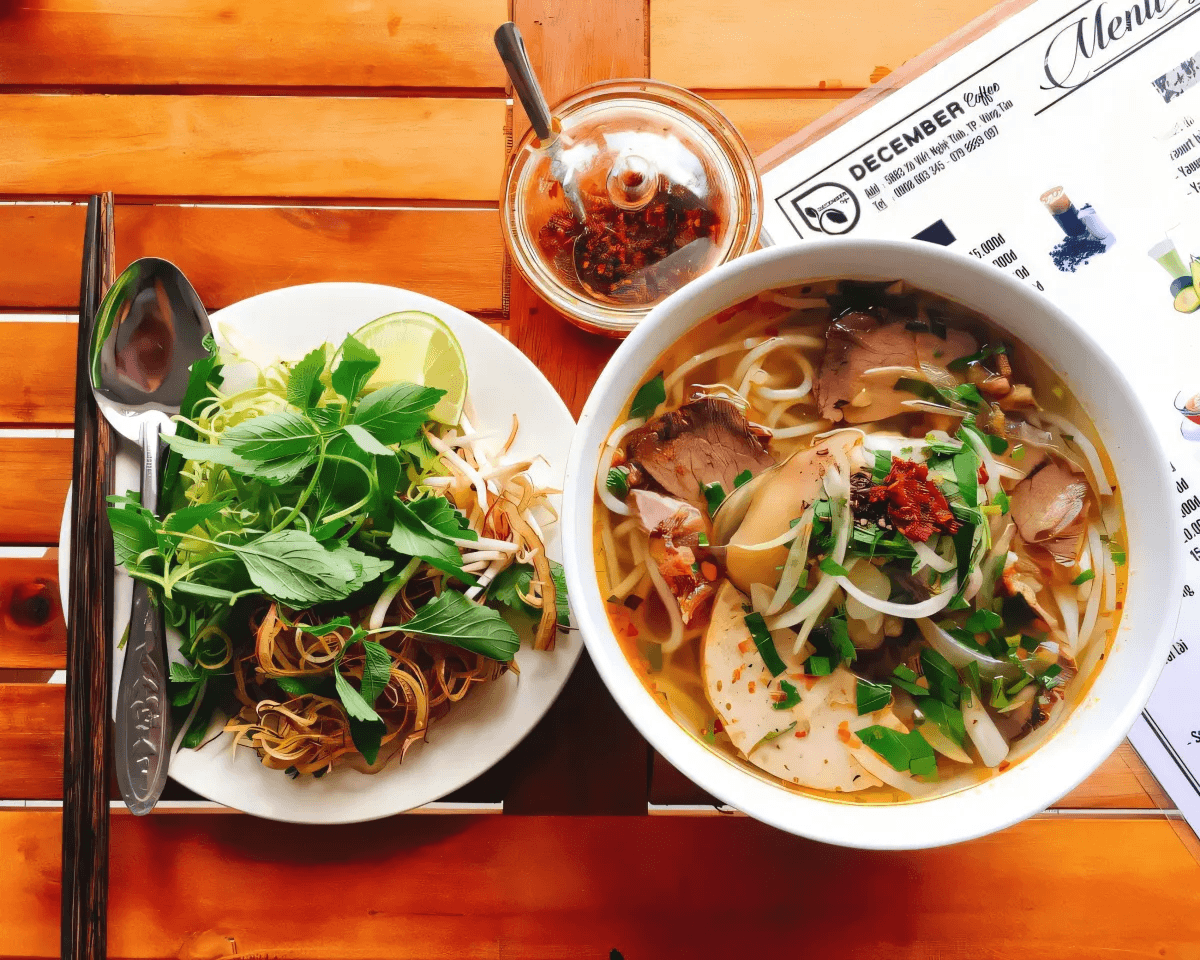
1. Ramen is a variety of ingredients
Ramen is a Japanese dish that contains thin and curled wheat noodles with a broth typically made of either miso, Shoyu (soy sauce), or a pork bone broth called Tonkotsu. It's a popular dish due to its inexpensive yet filling nature and comes with a variety of different potential toppings. This is including but not limited to pork slices, seaweed, eggs, or a type of sliced fish cake known as Kamaboku. In some restaurants, the customer can even dictate to the chef the shape and doneness they want in their noodles.
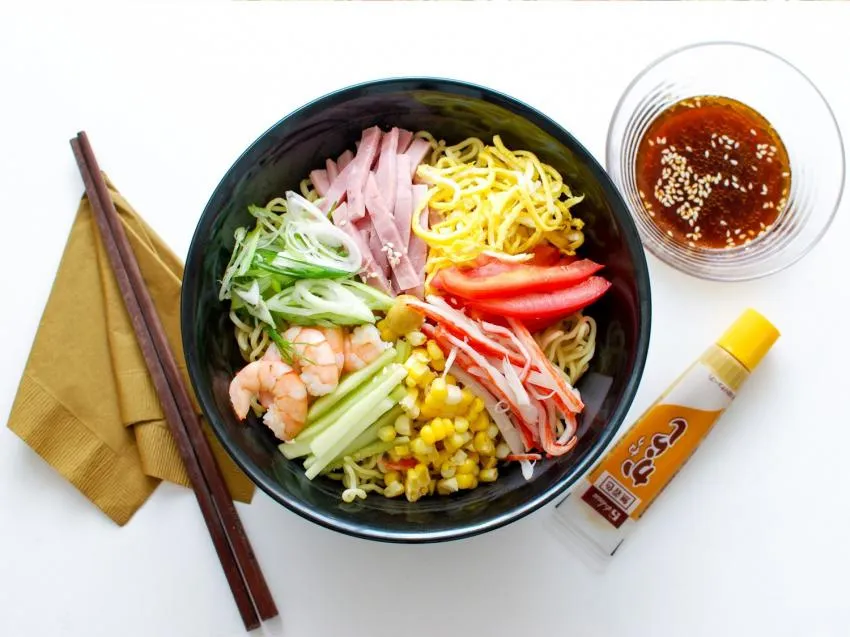
2. Ramen is most often in a broth
While ramen noodles are normally served in a warm broth, there is an exception in the broth-less 'cold ramen' that is typically eaten in the hot Japanese summers.
Cold ramen, also known as summer ramen or Hiyashi Chuka, has many of the same fixings as regular ramen but is laid out more like a salad than a soup. It often contains ingredients not typically used in regular ramens, like cold sliced tomatoes and cucumbers. It may also often come with a garnish to the side of sesame sauce or soy sauce, to dip the noodles into.
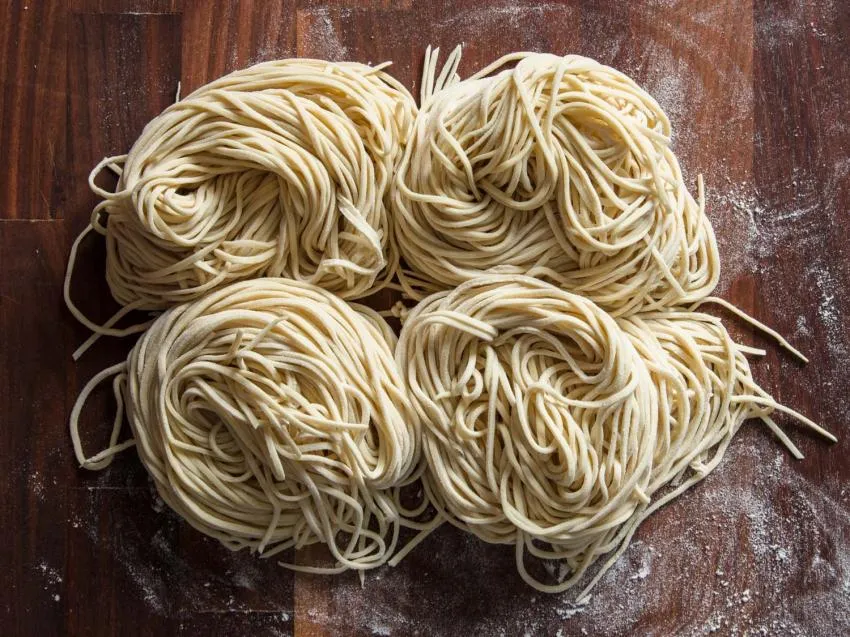
3. Ramen contains thin noodles
As mentioned previously, ramen exclusively has a thin type of noodle. These noodles are made from a wheat base and typically are slightly elastic. Due to this, ramen has flexibility when it is cooked properly. Not every ramen noodle is going to taste the same as every dish will have an influence from the chef's choices about the proper noodle size or the proper firmness of the cooked noodle.
What is Udon?
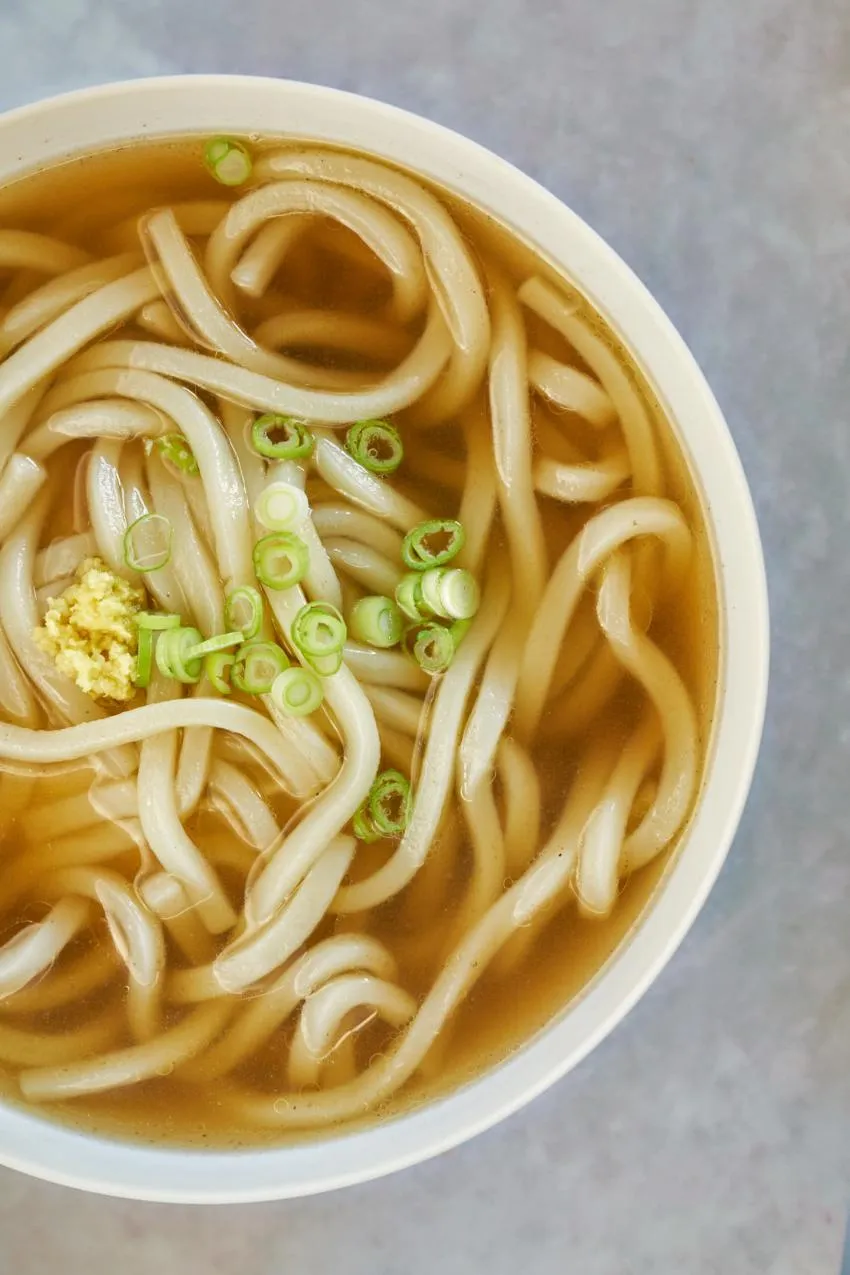
1. Udon has a variety of dishes served both hot and cold
Similar to ramen, udon is a form of Japanese wheat noodle that has a variety of different usages. While it is likely best known in the western world for the popular soup that it is used in, udon has a variety of different usages in its country of origin. Many of them are in soups but it is also well known for its presence in Zaru udon, a simple dish including the cool noodles being placed on a mat next to a dipping sauce.
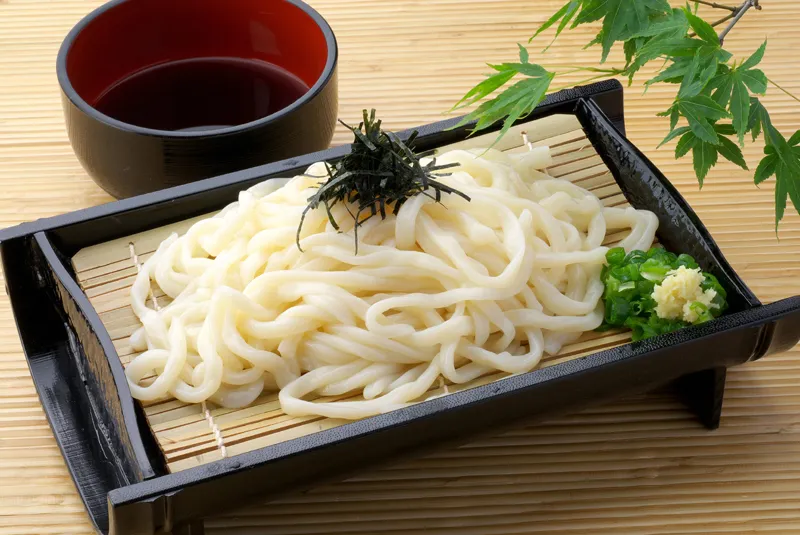
Udon comes in a wide variety of options. There is Kake udon, a dish of udon noodles in a hot broth with green onions. There is curry udon, a dish where the noodles and broth are combined with curry. There is Nabeyaki udon, a dish similar to a hot pot where the noodles and vegetables included are cooked by the heat of the broth itself.
The latter is only served during the coldest months of the season, while a dish like Zaru udon is typically served only during the warmest.
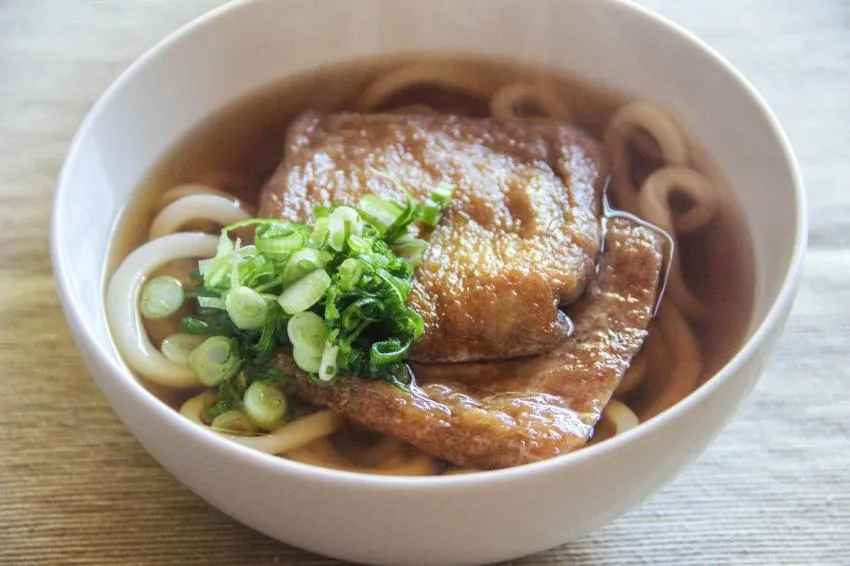
2. Udon is relatively low on ingredients
Udon, on the other hand, typically has an ingredient list that does not go much further than the noodles, one or two extra additions, and the broth--and even the latter is not necessarily always a function of the recipe. Many udon soups can be expected to only have one or two supporting flavors, as opposed to ramen's larger selection. There are of course exceptions to this, in the form of the earlier mentioned Nabeyaki udon, but the typical udon may only be broth and noodles with a garnish of tofu or some form of meat.
Udon has also been known to be used for stir fry dishes, and several regional variants are served only at certain times of the year such as ise udon.
3. Udon noodles are thick and absorbent
Udon noodles are thick and absorbent, tending to absorb the flavor of whatever broth or sauce they are being served with. As they are thicker and larger, udon noodles tend to be chewier. The girth of the noodle compensates for the lesser variety in garnishing, as these wheat noodles can be quite filling just on their own. While udon has yet to gain the amount of following that ramen has in the United States, it still has a devoted audience that loves these thick and chewy noodles.
So What Is The Difference Between Ramen and Udon?
It can be said that the difference between udon and ramen lies in size and scale. One dish goes big, while the other tends to stick to simplicity.
Ramen typically has a wide variety of ingredients as listed above. Meanwhile, udon tends to stick with just the noodles, the broth, and one or two additional ingredients. Ramen noodles are thin and elastic, while udon noodles are thick and absorbent. Udon noodles also have more variety in recipes, being used in far more cooled dishes than ramen, which mainly only has one non-soup variety. However, even in its varieties, udon tends to stick to simple setups, while the occasional varieties in ramen contain a bevy of ingredients just like the regular soup itself.
Both simple flavor profiles and complex ones can be delicious, while also providing a completely different tasting experience. Now that you know the difference between the two, the best thing that you can do is try both dishes yourself. Each one has a completely different palette pleaser to offer. A lover of food could come to love both dishes in the end.
Opinions and Perspectives
Great article but it missed mentioning the different soup base options for udon.
First time I had proper udon I was shocked at how different it was from instant versions.
After reading this, I understand why each needs its own specific type of bowl and serving style.
Im surprised the article didnt mention the different types of udon noodle thickness that exist.
The seasonal serving suggestions are really helpful. Saving this for my next Japan trip.
Does anyone else prefer their ramen noodles extra firm? The texture is so much better.
Not sure I agree about udon being simpler. Some varieties can be quite elaborate.
I find it fascinating how the thickness of udon noodles actually influences the whole dish structure.
Interesting how ramen has become more popular globally despite udon being equally delicious.
The article could have mentioned the price difference. Udon tends to be cheaper in my experience.
Something satisfying about the chewiness of udon that you just dont get with ramen.
Makes me wonder about the history behind why ramen developed with more ingredients while udon stayed simpler.
Just learned about Ise udon from this article. Going to have to track that down.
The thickness comparison really matters. Ive noticed ramen noodles break apart easier than udon.
That comment about udon being harder to find in the US is so true. We need more udon shops!
The description of cold ramen as a salad is spot on. Its really quite different from the hot version.
My Japanese grandmother always said good udon is about the quality of the noodles, while good ramen is about the harmony of all ingredients.
This really helps explain why the broths taste so different between the two.
I used to think I was a ramen person until I tried properly made udon. Now I love both equally.
Anyone else noticed how filling udon is? Those thick noodles really stick with you.
The article mentions Zaru udon but I wish it explained more about the dipping sauce.
Learning about the elasticity of ramen noodles versus the absorbency of udon helps explain why they feel so different in your mouth.
You can definitely find curry udon at most authentic Japanese restaurants in major cities.
The seasonal aspect of these dishes really shows how thoughtful Japanese cuisine is.
Whoever invented Tonkotsu ramen deserves a medal. That pork bone broth is absolutely incredible.
That cold ramen description made me hungry. Those summer ingredients sound so refreshing.
Never understood why people compare them so much. They're completely different experiences in my opinion.
The absorption factor of udon noodles is key. They really do soak up flavors differently than ramen noodles.
My local ramen shop lets us choose noodle firmness. I always go for extra firm because I love the texture.
The article really helped me understand why I love both for different reasons. Ramen when I want something hearty, udon when I want something clean and simple.
Has anyone tried making either at home? I'm thinking of starting with udon since it seems easier with fewer ingredients.
I respectfully disagree about udon being simpler. The regional varieties can be quite complex in their own way.
Interesting point about udon having more varied recipes despite fewer ingredients per dish.
Just tried Nabeyaki udon for the first time last week. The hot pot style cooking adds such a unique dimension to the experience.
Udon's simplicity is what makes it special. Sometimes less really is more when it comes to good food.
Really fascinating how weather affects which dishes are served. Never knew cold ramen was specifically a summer thing!
I actually prefer ramen because of all the toppings and ingredients you can add. More variety keeps it interesting for me.
The thickness of udon noodles makes such a difference in texture. I love how they really soak up the broth flavors.
I had no idea there were so many differences between ramen and udon! Always thought they were pretty much the same thing with different noodles.
